The Alhambra Palace and Fortress
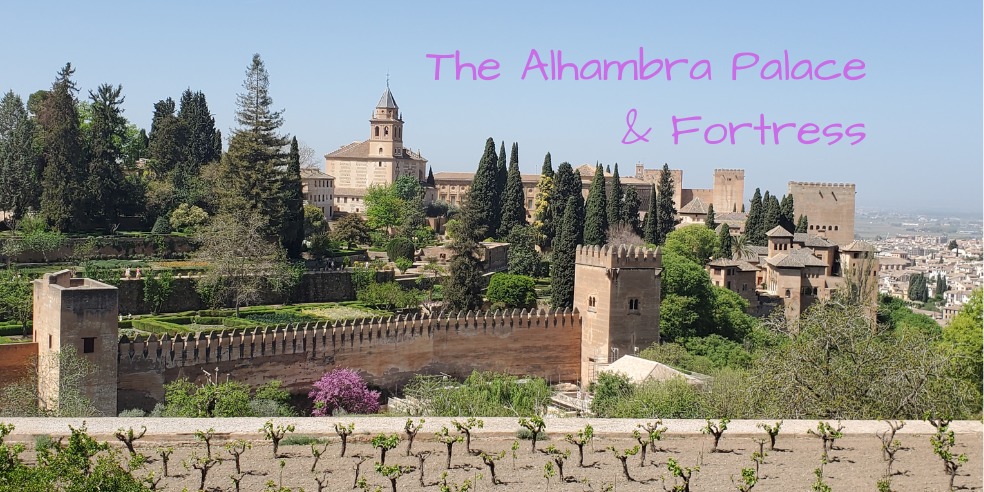
The stunning Alhambra Palace and fortress complex is located in southern Spain, only two hours from the coastal city of Malaga. The complex overlooks the city of Granada with a spectacular backdrop of the Sierra Nevada mountain chain. It is one of the most famous and well-preserved examples of Islamic architecture in the world, the Alhambra is designated as a UNESCO World Heritage Site. The name “Alhambra,”derived from the Arabic words “al-Qalat al-Hamra,” means “Red Castle” or “Red Fortress.” This is likely due to the reddish color of the walls.
Historical Background
The Alhambra’s history dates back to the 13th century when it was originally constructed as a small fortress on the remains of Roman fortifications. In 1238, the Nasrid dynasty, the last Muslim dynasty in the Iberian Peninsula, transformed the fortress into a royal palace and residence.
Architecture and Features the Alhambra Palace
The Alhambra fortress complex is a stunning blend of Islamic architecture and artistry, combining various elements of Islamic and Moorish styles with intricate tilework, calligraphy, and beautiful gardens. It consists of several buildings and spaces, each serving different purposes:
- Nasrid Palaces: These are the most famous and elaborate structures within the Alhambra complex. The Palacios Nazaríes, feature gorgeous courtyards, intricate stucco work, and exquisite tile mosaics. The most renowned rooms include the Court of the Lions (Patio de los Leones) and the Hall of the Ambassadors (Sala de los Abencerrajes).
- Generalife: This area was the summer palace and gardens of the Nasrid rulers. It is a serene and beautiful space with lush gardens, fountains, and breathtaking views of the surrounding landscape.
- Alcazaba: The original fortress, strategically situated on the highest point of the Alhambra, served as the military stronghold.
- Charles V Palace: A Renaissance-style palace constructed in the 16th century within the Alhambra complex by Holy Roman Emperor Charles V. It provides an interesting contrast to the traditional Islamic architecture.
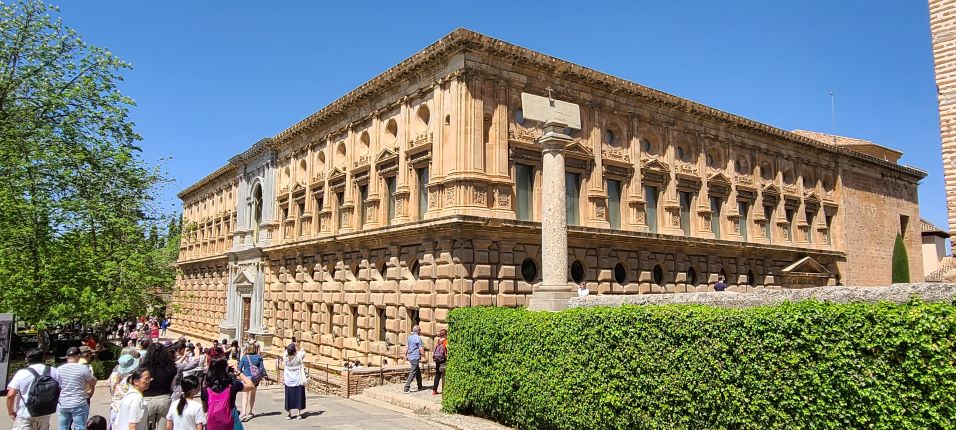
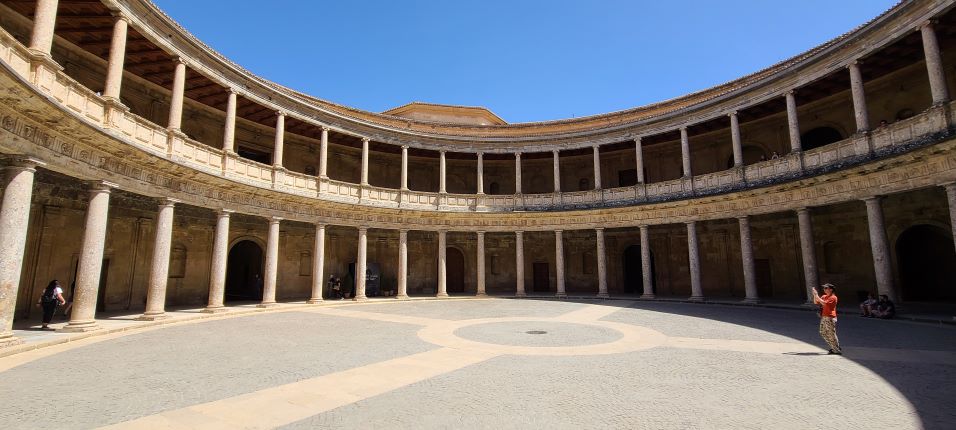
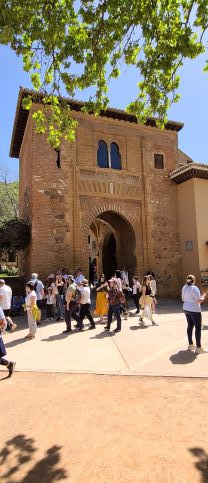
Other Key Points about the Alhambra
- Moors in Spain: The Alhambra stands as a significant symbol of Moorish rule in Spain. It reflects the cultural and architectural influence of the Islamic civilization during the medieval period.
- Christian rule: In 1492, the Catholic Monarchs, Ferdinand II of Aragon and Isabella I of Castile, conquered Granada. This effectively ended Islamic rule in the Iberian Peninsula. The Alhambra was preserved under Christian rule, and various changes were made to the complex over time.
- Literary and Artistic Inspiration: The Alhambra has inspired numerous writers, poets, and artists over the centuries, including the American writer Washington Irving, who wrote “Tales of the Alhambra.”
- UNESCO World Heritage Site: In 1984, the Alhambra was designated an UNESCO World Heritage Site to recognize its historical and architectural significance and the need for its preservation.
- Restoration of the Alhambra: During the 19th century, the Alhambra underwent significant restoration efforts under the direction of Spanish architect Leopoldo Torres Balbás to preserve its historical beauty.
Touring the Alhambra Palace
Given its historical significance and architectural beauty, the Alhambra is a major tourist attraction in Spain. To preserve its delicate structures, access to certain areas may be limited. The following are some tips and information to help make the most of your visit:
- Tickets: It’s essential to book your tickets in advance, especially during peak tourist seasons. The Alhambra receives a high number of visitors daily. Purchase tickets in advance online through the official Alhambra website or through authorized ticket sellers.
- Nasrid Palaces: The Nasrid Palaces are the most popular part of the Alhambra and require a separate time slot on your ticket. Take note of the entry time and be there on time, as they strictly enforce the schedule to manage visitor flow.
- Generalife Gardens: Don’t miss the Generalife Gardens, located adjacent to the Nasrid Palaces. These stunning gardens are a beautiful place to explore and offer fantastic views of the Alhambra.
- Alcazaba Fortress: The Alcazaba is the oldest part of the Alhambra and offers impressive views of Granada and the surrounding area from its watchtowers.
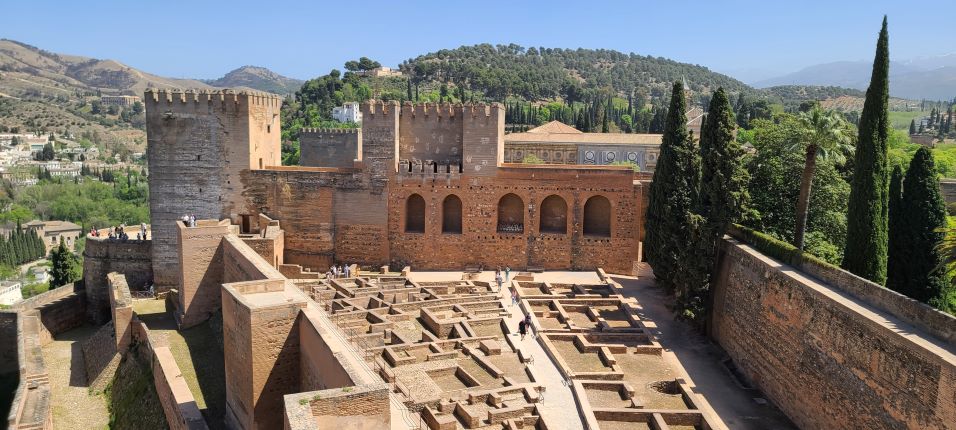
- Palacios Nazaríes: Explore the Palacios Nazaríes, which includes the Mexuar, Comares, and Lions Palaces. These palaces showcase intricate Islamic architecture and stunningly detailed decorations.
- Wear Comfortable Shoes: The Alhambra complex is extensive and involves walking on uneven terrain, so wear comfortable footwear.
- Sun Protection: Granada can get quite hot, especially during the summer months. Be sure to wear sunscreen, a hat, and bring water to stay hydrated.
- Photography: Photography is generally allowed throughout most of the Alhambra, except inside some of the Nasrid Palaces. However, always be respectful of posted restrictions.
- Audio Guide or Guided Tour: Consider getting an audio guide or joining a guided tour. This will enhance your experience and gain more insights into the history and significance of the Alhambra.
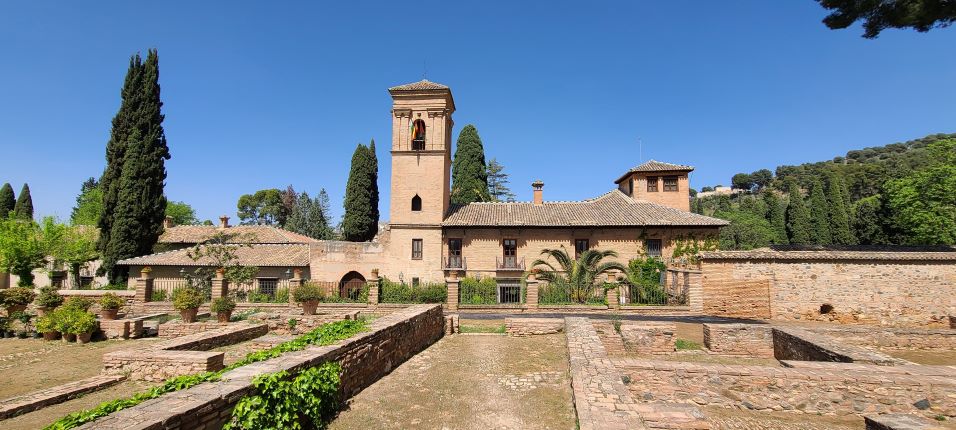
The Alhambra, Rich in History and Architectural Splendor
The Alhambra’s rich history, architectural splendor, and cultural significance make it an extraordinary destination. For travelers interested in exploring the fascinating legacy of Islamic Spain and the interplay of different civilizations over the centuries.
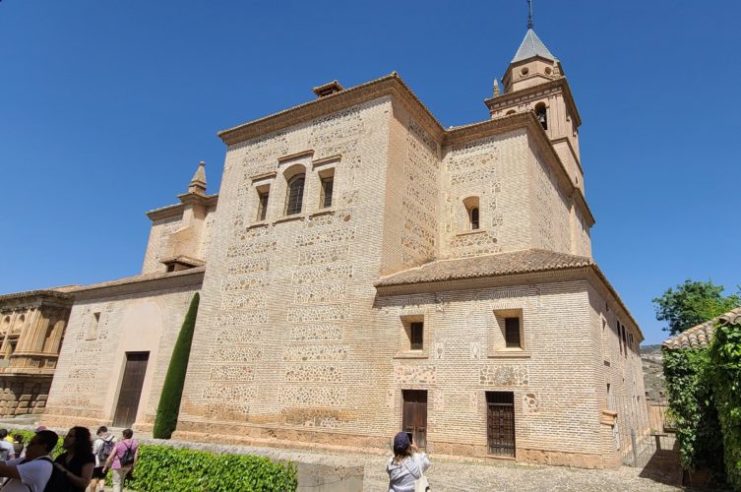
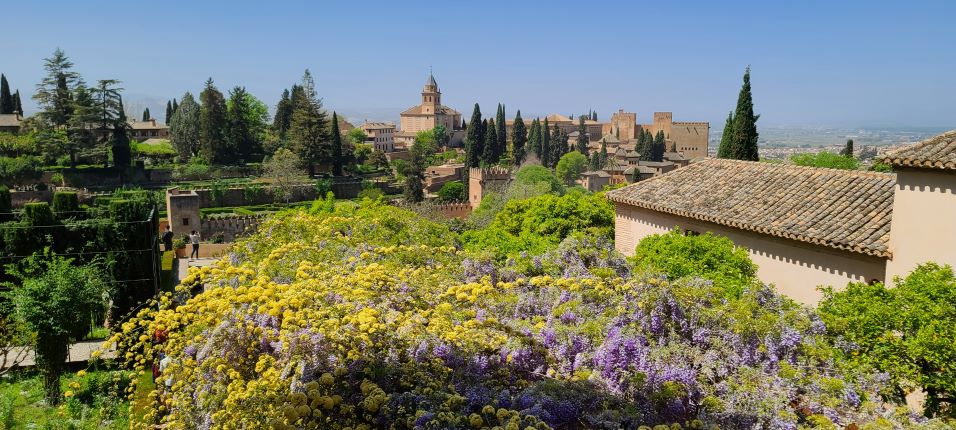
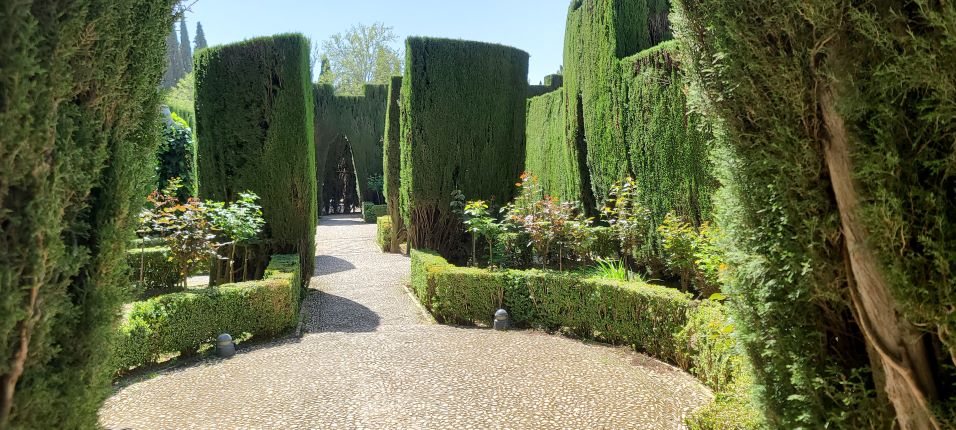
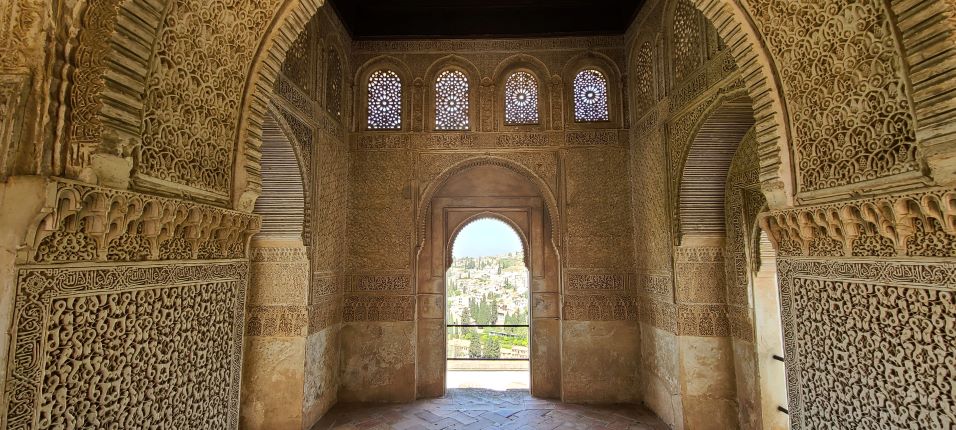
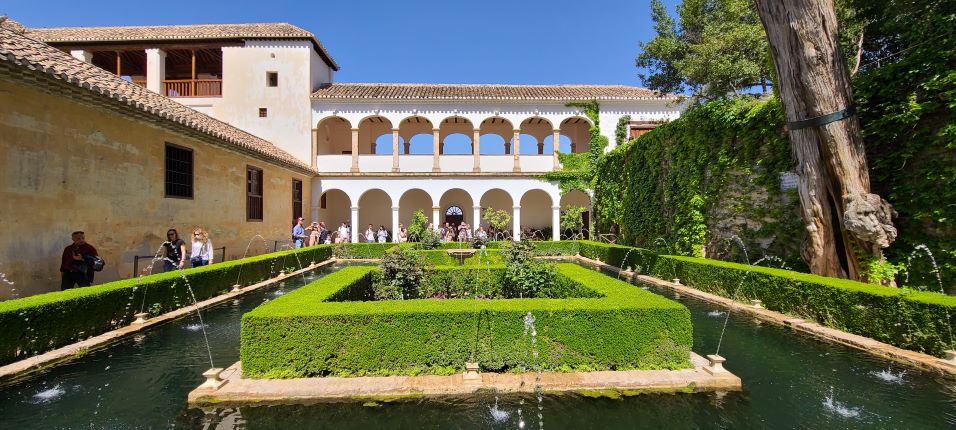
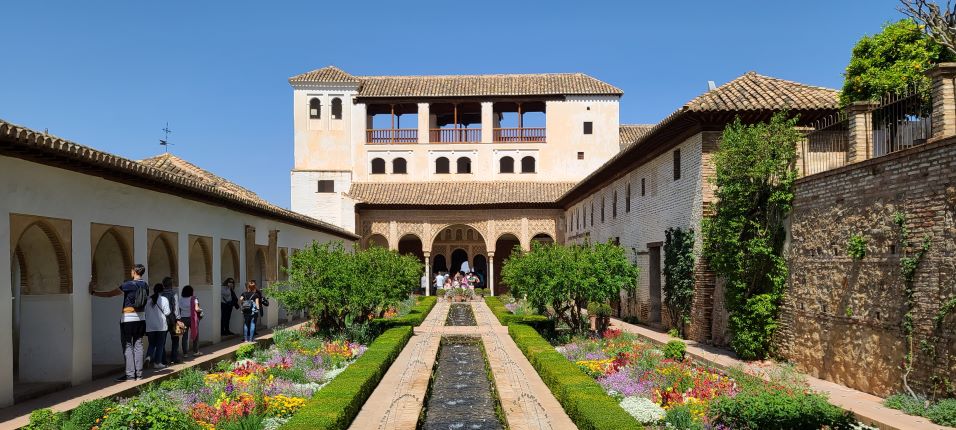
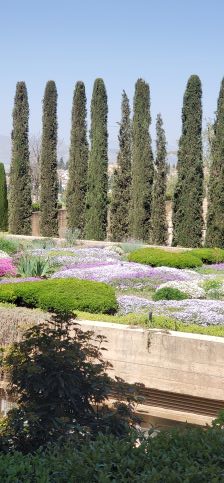
One Comment